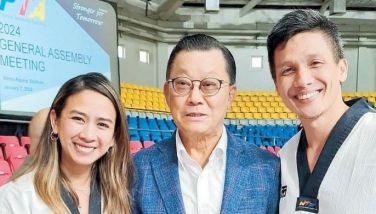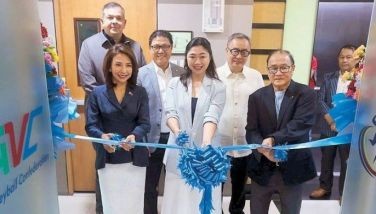Boom or doom?

About two years ago, Public Works and Highways Secretary Rogelio “Babes†Singson was being grilled in a budget hearing at the House of Representatives why his department has been slow in the implementation of infrastructure projects all over the country. At the time Singson was defending before the House committee on appropriations the proposed budget of the DPWH for 2013.
At the House public hearing, Singson admitted in frustration that the DPWH – the chief state agency in charge of construction projects of the government – has a shallow bench of qualified civil engineers.
Queried about the lack of qualified engineers in the agency, Singson cited the DPWH cannot provide salaries comparable to those in the private sector. Thus, Singson tried to impress upon the lawmakers the need to upgrade and professionalize the ranks of the DPWH. In this way, he argued, this would allow him to perform his management role.
Pressed by congressmen at the budget hearing in 2012 why not instead promote civil engineers who are already employed at the DPWH, Singson retorted: “Wala hong makapasa (sa exam), paano ba naman yan (no one passes the exam, what can we do)?â€
He was referring to the agency’s set of 200-question examination required for takers to pass promotion. The examinees are given three hours to answer the questions. That should be ample time, or about a minute per question.
The DPWH administers this pre-qualifying examinations covering technical, analytical and management engineering topics. Singson said takers of this exam must at least answer 100 items correctly. They should pass the technical, stock knowledge, and analytical items. “If I still have to teach them about the technical terms, they can go and look for job somewhere else,†Singson pointed out.
That’s why, the DPWH secretary sought to justify his increased budget request to cover higher pay to hire civil engineers if only to get the best and qualified professionals to do the job at most efficient cost to the government.
Singson disclosed the DPWH offers good entry-level salaries of P24,000 to P26,000 for licensed civil engineers. Singson expressed preference to hire “honor graduates†of engineering courses, especially civil engineering. Incidentally, Singson is an industrial engineer by profession.
To address the agency’s issues on “unqualified†government engineers, Singson told the congressmen that the DPWH was about to launch a “cadetship program†in the search to hire honor graduates.
Fast forward. While doing daily news monitoring, a Malacañang photo release caught my interest. It showed President Aquino, along with Singson, formally welcoming the first batch of 40 graduates of this Cadet Engineering Program.
The photo caption stated: “DPWH implemented its first Cadet Engineering Program in partnership with First Pacific Leadership Academy (FPLA) to set new entry standards for civil engineers in the bureaucracy. The President is flanked by Public Works Secretary Rogelio Singson and Roy Evalle, executive director of First Pacific Leadership Academy.â€
From what I gathered, out of the first batch of 40 graduates of this Cadet Engineering Program of the DPWH, eight of them graduated with honors and 27 had a rating of above 85 percent when they passed the civil engineering licensure examination of the Professional Regulation Commission.
As announced by the DPWH in February last year, it contracted the FPLA to design and conduct the Philippine government’s very first Cadet Engineering Program (CEP).
Billed as the country’s first dedicated corporate university, the FPLA is connected with the Metro Pacific Group headed by one of the country’s top business leaders Manny V. Pangilinan.
The CEP is an extensive 26-week induction course focusing on the development of technical and professional competencies of new civil engineers who aspire to start their careers in DPWH. During the six and a half months of training, cadet civil engineers went through classroom studies, immersion in the bureaus, services, regional and district offices to make them well-rounded and competent members of the organization.
Integral parts of the program, according to FPLA, also included field exposures, values formation, leadership and professional image enhancement workshops, and a host of enrichment activities that familiarized the cadet engineers with the department’s structure, processes, facilities, personnel and culture. “Every facet of the program targets to facilitate the Cadet’s understanding of public service as a career and as a commitment which fosters personal integrity very much needed in a line of work that is beset with ethical challenges.â€
“We are proud and honored to do this for DPWH. We believe that by harnessing the talents and skills of a young generation of leaders, we are helping build our nation. We will ensure that the best practices of FPLA cascade to the government sector via the DPWH,†Evalle was quoted saying.
The CEP program, as initiated by Singson, vowed to push the advocacy of transformation and innovation in governance he started since he assumed stewardship of the DPWH. Guided by the need to fill executive positions in the years to come even after the term of this incumbent administration, it should become Singson’s legacy to lay the foundation “to raise a new breed of young, committed, and empowered civil engineers who will drive positive change in the organization.â€
The graduation of the first batch of cadet engineers should augur well for the remaining term of office of President Benigno “Noyâ€Aquino III. The entry into the bureaucracy of these cadet engineers should pick up the pace for many government infrastructure projects that have remained in the pipeline under the Aquino flagship Public-Private Partnership (PPP).
Without any doubt, President Aquino must accept the fact his administration is in catch-up mode to start and complete his flagship projects hopefully before the end of his term in June 2016.
The very keen interest of congressmen on the budget and capability of the DPWH to deliver and complete infrastructure projects is but natural and should not be a surprise. When Singson promised to hire more qualified and competent civil engineers to work in the government, it was during deliberations of the proposed 2013 budget when both the Senate and the House still hold sway over their annual, multi-million “pork barrel†allocations under the so-called Priority Development Assistance Fund (PDAF). This is not to mention the congressional insertions by each and every senator and congressman into the annual budgets of various government agencies such as the DPWH.
But due to the mounting public sentiment against the alleged P10-billion pork barrel scam, President Aquino was forced to recast the PDAF allocations totally different from how these were utilized before. As approved last year in the 16th Congress, senators and congressmen can however still identify their choice projects in each implementing agency of government, including public works under the 2014 DPWH budget.
Under its Congress-approved program of expenditures, the DPWH infrastructure projects for the year are set to create more than half a million employment. Singson committed for the DPWH to generate 536,523 jobs under the Community-Based Employment Program (CBEP). This is another priority program of the Aquino administration aimed at providing short-term employment to skilled, semi-skilled, and low-skilled workers in the community.
The DPWH secretary last week reminded private contractors to comply with Republic Act No. 6685 that requires them to hire at least 50 percent of the unskilled and 30 percent of the skilled labor requirements from the available bona fide residents in which the projects are to be taken. At least 15 infrastructure projects of the DPWH are currently ongoing all over Metro Manila, which account for the bulk of the country’s jobless ranks.
Other than lack of qualified civil engineers of the DPWH, many of these infrastructure projects under the PPP have languished in the pipeline for quite some time. The causes of delay range from the usual bureaucratic troubles like bidding wars, right-of-way claims, to court litigation, red tape, among others.
So with a fresh team of civil engineers now being sent into action by the DPWH secretary – though as they call it in basketball in the last two minutes of the game – how they perform will spell the boom, or doom, of P-Noy’s infrastructure legacy.
- Latest
- Trending




























